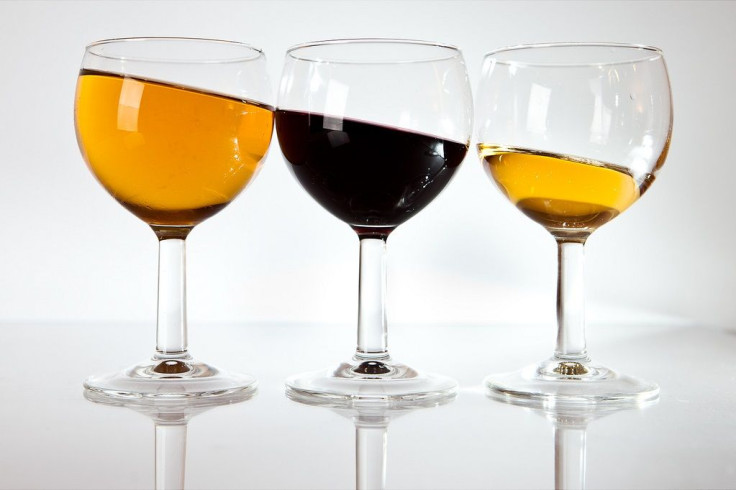Smaller Wine Glass Tricks People Into Thinking There's More Wine Inside Than There Actually Is

The amount of wine you’ll be drinking this holiday season may have a little to do with how wide and short the glass it comes in is. At least, that’s what a new study published this Wednesday in PLOS-One suggests.
The researchers recruited over 300 online volunteers to take part in a simple task: Look at a filled wine glass and then attempt to match its exact volume in other differently sized and shaped glasses. As expected, few estimated correctly but there were specific patterns to how they guessed wrong — particularly that when they had to match up larger volumes of wine, people assumed that a wider, shorter, but equally-sized glass contained more wine than it truly did, which led them to underfill the glass.
“These results are broadly consistent with people using the relative fullness of glasses to judge volume, and suggest both the shape and capacity of wine glasses may influence perceived volume,” the authors wrote.
When it comes to proportion, people are generally bad guessers. Previous research has shown that people given smaller-sized plates and bowls ate less but assumed they had eaten more than those given the jumbo version. And it applies to alcohol as well, with people being shown to presume narrow bottles contain more beer than cans — due to an illusion known as the elongation effect.
For wine, studies has shown that people pour more wine into a wider glass than one narrower when both are the same size, likely because they believe the former is smaller than it actually is. But the elongation effect might only partly influence our perception of alcohol volume, the researchers theorized — perhaps how full a wine glass appears could as well.
To test their theory out, they enlisted 360 volunteers through Amazon’s Mechanical Turk. The subjects were each given three different photos of a glass of red wine, at varying amounts (125, 175, and 250 milliliters), and asked to match its volume — via mouse scroll — to either a wider but equally-sized glass; a larger glass with the same width; and a glass both wider and larger.
Befitting their hypothesis, they found that at all volumes, the larger glass was overfilled, suggesting a perception of the glass being smaller than it actually was. But for the wider-and-larger and wider glasses, the overfill effect was both tinier and only seen for the smallest wine volumes. The wider glass in particular led to an underestimation of just over 30 milliliters for the largest volume of wine.
Overall, these findings indicate that while we might perceive a shorter glass to have less capacity than a taller one, that same glass, when actually filled with a good amount of wine, can trick us into thinking there’s more inside it than there really is. This mistaken assumption might mean that people can be nudged into thinking they’re drinking more than they are, provided they’re handed a stockier and filled up glass of wine, according to the authors.
“Perceptions that smaller glasses contain more than larger ones (despite containing the same volume), could slow drinking speed and overall consumption by serving standard portions in smaller glasses,” they concluded. “This hypothesis awaits testing.”
Source: Pechey R, Atwood A, Couturier D-L, et al. Does Glass Size and Shape Influence Judgements of the Volume of Wine? PLOS-One. 2015.
Published by Medicaldaily.com



























